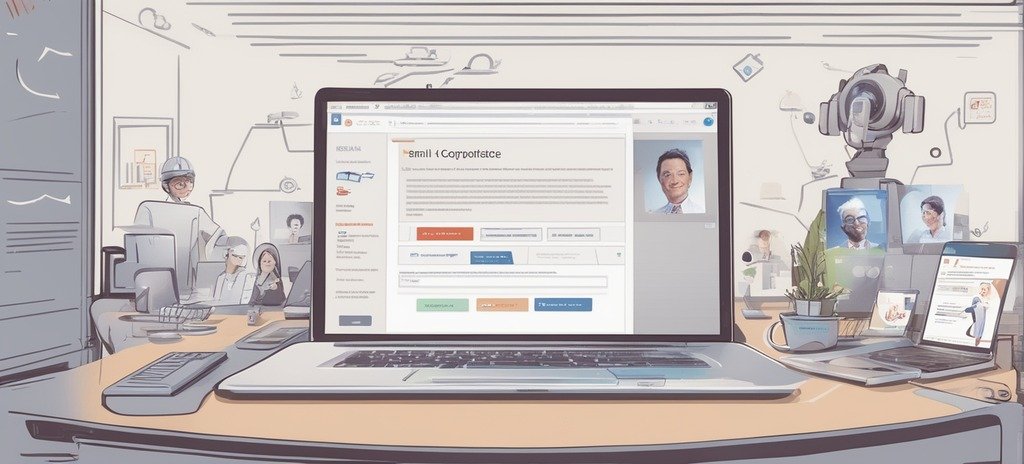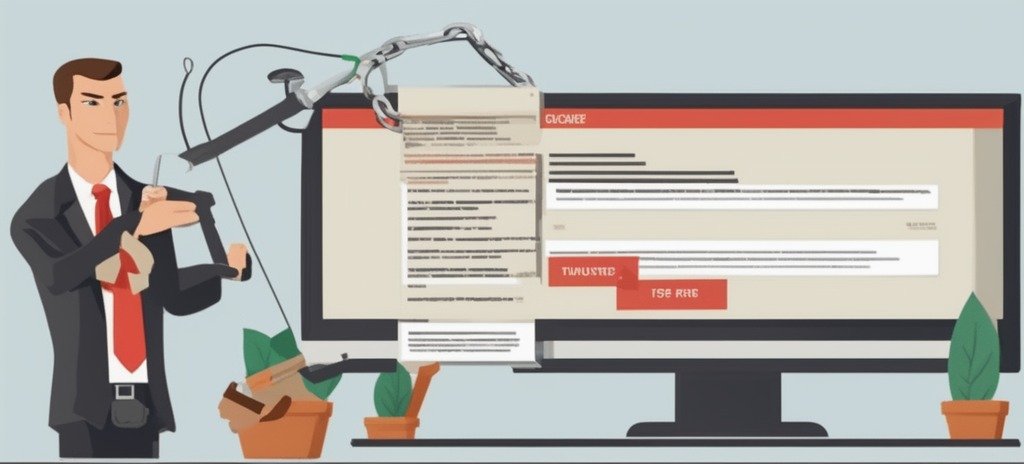In today’s digitally interconnected world, where information is a prized asset, cybersecurity threats continue to evolve. A significant threat that can cause substantial harm to both organizations and individuals is “Phishing”.
In this beginner’s guide, we will explain what is Phishing, its various types, the techniques employed by cybercriminals, and the crucial ways to protect your organization against these attacks.
What is Phishing?

Phishing is a deceptive cyber attack in which malicious actors disguise themselves as legitimate entities to trick individuals into revealing sensitive information.
This information can include usernames, passwords, credit card numbers, and more. Phishing typically occurs through various channels such as email, social media, or instant messaging, making it a versatile and widespread threat.
Types of Phishing
Phishing, as a cyber threat, manifests in various forms, each tailored to deceive individuals, or organizations into divulging sensitive information or performing actions that benefit malicious actors.
- Email Phishing
Email Phishing remains the most pervasive and recognizable form of phishing. In this technique, attackers send deceptive emails that pretend to be legitimate correspondence from trusted sources. These emails often contain enticing subject lines, official logos, and convincing language.
The ultimate goal is to lure recipients into clicking on malicious links, downloading harmful attachments, or divulging sensitive personal or financial information.
Email phishing casts a wide net, targeting a broad range of recipients in the hopes of finding unsuspecting victims.
- Spear Phishing
Spear phishing takes the art of deception to a more precise level. In this technique, cybercriminals meticulously research and select specific individuals or organizations as their targets.
Armed with detailed knowledge about the victims, such as their roles, interests, and affiliations, attackers craft highly personalized and convincing messages.
This approach makes spear phishing exceptionally difficult to spot, as the emails appear to come from trusted sources and often reference familiar information.
The endgame remains the same: to manipulate recipients into taking specific actions, be it sharing confidential data or depositing money to fraudulent accounts.
- Pharming
Pharming (also known as “Pharming attacks” or “Pharming Scams”) is a more covert phishing technique that targets the domain name system (DNS) servers or manipulates host files on the victim’s devices.
By compromising DNS servers or altering host files, cybercriminals can redirect users to fraudulent websites that closely mimic legitimate ones.
Victims unknowingly land on these fake sites, where they may be prompted to enter login credentials, personal information, or financial data. Pharming attacks are especially insidious because users often trust the web addresses they visit.
Even if users type the correct URL, they can be redirected to the malicious site, increasing the chances of falling victim.
- Vishing
In this technique, attackers use phone calls to manipulate individuals into revealing sensitive information, such as account numbers, social security numbers, or login credentials. These calls may appear to originate from reputable institutions, like banks or government agencies, creating a sense of urgency and legitimacy.
Vishing attacks often involve social engineering tactics, where attackers play on emotions, instill fear, or offer enticing rewards to manipulate victims. The immediacy and direct interaction in vishing make it a formidable phishing variant
- Smishing
Smishing is a mobile-centric form of phishing that exploits text messages (SMS) to deceive users. In smishing attacks, recipients receive seemingly innocuous SMS messages that entice them to click on malicious links or provide personal information. These messages may claim to be from trusted sources or offer enticing rewards.
The goal is to trick users into taking actions that compromise their security. Given the prevalence of smartphones and the rapid adoption of text messaging, smishing has gained prominence as a convenient and effective way for cybercriminals to target individuals on the go.
Techniques Used in Phishing

The following techniques are commonly employed in phishing attacks
- Spoofed Websites
One of the primary tactics wielded by phishers is the creation of spoofed websites. In this technique, malicious actors meticulously craft counterfeit websites that bear an uncanny resemblance to legitimate ones.
These fraudulent sites often mirror the design, logos, and content of well-known platforms, such as banking websites, e-commerce portals, or social media networks. The objective is to lure unsuspecting users into believing that they are interacting with a trusted entity.
To safeguard against this threat, users must exercise caution when entering personal information online. Verifying the authenticity of a website by checking the URL and ensuring it employs encryption (HTTPS) can help mitigate the risk of falling victim to this form of phishing.
- Social Engineering
Phishers are adept at exploiting psychological vulnerabilities through a technique known as social engineering.
This method involves manipulating emotions, trust, or urgency to coax individuals into taking immediate actions that benefit the attackers. Social engineering tactics often prey on human psychology, including curiosity, fear, and the desire for reward.
To counteract social engineering, individuals should remain vigilant and exercise skepticism when encountering unsolicited emails, messages, or requests for personal information. Verifying the legitimacy of requests through trusted channels or contacting the purported sender directly can help to oppose these manipulative tactics.
- Malware Distribution
Malware distribution is another favored technique in the phisher’s toolkit. This approach involves the dissemination of malicious software through various means, including email attachments or downloads from seemingly friendly or trusted sources.
Once the malicious software infiltrates the victim’s device, it can wreak havoc in multiple ways. This may include stealing sensitive data, tracking user activities, encrypting files for ransom, or enabling remote control of the compromised device.
To shield against malware-based phishing attacks, individuals and organizations must adopt comprehensive cybersecurity practices.
This includes deploying robust antivirus and anti-malware solutions, regularly updating software to patch vulnerabilities, and exercising caution when downloading files or clicking on links, particularly within unsolicited emails.
Phishers employ several techniques to manipulate and deceive their victims. By understanding the workings of spoofed websites, social engineering, and malware distribution, individuals and organizations can better equip themselves to identify and oppose these deceptive tactics, thereby safeguarding sensitive information and digital assets from falling into the wrong hands.
How to Recognize Phishing

In the digital age, where our inboxes are flooded with emails and our online interactions are ever-increasing, the ability to recognize phishing attempts is an invaluable skill.
- Generic Greetings
One of the important signs of a phishing attempt is the use of generic greetings. Phishers often include salutations like “Dear Customer” or Hello User” instead of addressing recipients by their names.
This impersonal approach is a red flag that the sender may not have genuine or specific information about you. Legitimate organizations, on the other hand, usually personalize their communications by using your name.
- Urgency and Threats
Phishing emails often employ psychological manipulation to induce recipients into taking immediate action. These messages may create a sense of urgency by claiming that your account is compromised, that an unauthorized transaction has occurred, or that your immediate response is required to prevent dire consequences.
Exercise caution when encountering emails that use the prospect of adverse consequences to pressure you into immediate action. Phishers use fear and anxiety to pressure recipients to click links or provide sensitive information without due consideration. In such cases, take a moment to assess the situation critically.
- Mismatched URL
Another vital aspect of recognizing phishing attempts is scrutinizing the URLs provided in emails or on websites. Phishers often go to great lengths to create web addresses that mimic legitimate ones.
However, upon closer inspection, you may discover discrepancies or misspellings that reveal the fraudulent nature of the URL.
Always verify the URL’s authenticity before clicking on any links. Pay attention to subtle differences, such as extra characters, misspelled domain names, or unusual subdomains. Additionally, ensure that the website employs the “HTTPS” protocol, indicating a secure connection and that the website’s security certificate is valid.
- Unsolicited Attachments and Links
Refraining from opening unsolicited attachments or clicking on links from unknown or suspicious sources is a cardinal rule in recognizing phishing attempts. Phishers frequently send emails containing attachments or embedded links that lead to malicious websites or download harmful files to your device.
Even if an email appears to be from someone you know, be cautious if it contains unexpected attachments or links. Verify the legitimacy of the source through alternative means, such as contacting the sender directly, before engaging with any attachments or links.
Additional Signs of Phishing
In addition to the above indicators, be on the lookout for
- Poor Grammar and Spelling
Phishing emails frequently exhibit spelling and grammatical inaccuracies, which suggest a lack of professionalism
- Unusual Sender Addresses
Check the sender’s email address for abnormalities or domains that don’t match the organization’s official domain.
- Request for Personal Information
Reputable institutions generally refrain from soliciting sensitive information through email.
Top 10 Ways to Prevent Your Organization From Phishing

Phishing attacks continue to be a pervasive and evolving threat in the cybersecurity landscape. Organizations must be proactive in implementing robust defenses to protect against these malicious attempts.
- Employee Training and Awareness
Employee training remains one of the most critical pillars of defense against phishing. Regular cybersecurity training sessions should not only educate employees about the risks but also empower them with the knowledge to recognize phishing attempts and report them promptly.
- Implement Robust Email Filters
Incorporate advanced email filtering solutions that can identify and intercept phishing attempts before they infiltrate employees’ inboxes.
These filters use advanced algorithms and threat intelligence to spot suspicious emails, preventing them from reaching your staff. This layer of protection can significantly reduce the chances of a successful phishing attack.
- Multi-Factor Authentication (MFA)
Multi-factor authentication (MFA) stands as a crucial security measure, providing an additional layer of safeguarding. Implementing a multi-factor authentication system significantly diminishes the chances of unauthorized access, even in citations where login credentials have been compromised.
- Regular Software Updates
Keeping all software and applications up-to-date is vital in the fight against phishing. Phishers often exploit known vulnerabilities in outdated software.
Regular updates and patches help to seal these security gaps, making it harder for cybercriminals to gain a foothold in your organization’s systems.
- Implement DMARC
Domain-based Message Authentication Reporting and Conformance (DMARC) is a critical tool in preventing email spoofing.
By authenticating email senders and instructing email servers how to handle unauthenticated messages, DMARC helps to ensure that only legitimate emails make it into inboxes, protecting against phishing attempts.
- Foster a Culture of Security Awareness
A security-aware culture starts at the top and permeates throughout the organization. It involves encouraging employees to be vigilant, question suspicious activities, and take ownership of their role in the organization’s cybersecurity.
Regularly communicate the importance of security and provide channels for reporting potential threats.
- Ensure HTTPS for Your Website
Securing your organization’s website with HTTPS is not only crucial for protecting user data but also for safeguarding against phishing.
It helps ensure that visitors are connecting to your website via encrypted connections, making it significantly more challenging for phishers to impersonate your site.
- Endpoint Security
Endpoint security solutions are paramount in detecting and preventing malware, which is often delivered through phishing emails.
Install and consistently update endpoint security software to ensure that your organization’s devices are shielded from malware and other malicious software.
- Develop an Incident Response Plan
A clear and well-documented incident response plan is indispensable when phishing incidents occur. It outlines the steps to take when a phishing attempt is successful, ensuring a swift and effective response that minimizes potential damage.
- Conduct Regular Security Audits
Periodic security audits and assessments are essential for identifying and rectifying vulnerabilities within your organization’s infrastructure and practices. By proactively addressing weak points, you reduce the likelihood of successful phishing attacks.
In the ongoing battle against phishing attacks, organizations must adopt a multi-faceted approach to safeguard their sensitive data and assets. These top 10 prevention strategies, ranging from employee training and robust email filtering to multi-factor authentication and incident response planning, collectively create a formidable defense.
By implementing these measures and maintaining a proactive stance towards cybersecurity, organizations can significantly reduce their vulnerability to phishing attacks and protect their valuable information from falling into the wrong hands.
Check out the blog : What is Spyware and Different Types of Spyware
